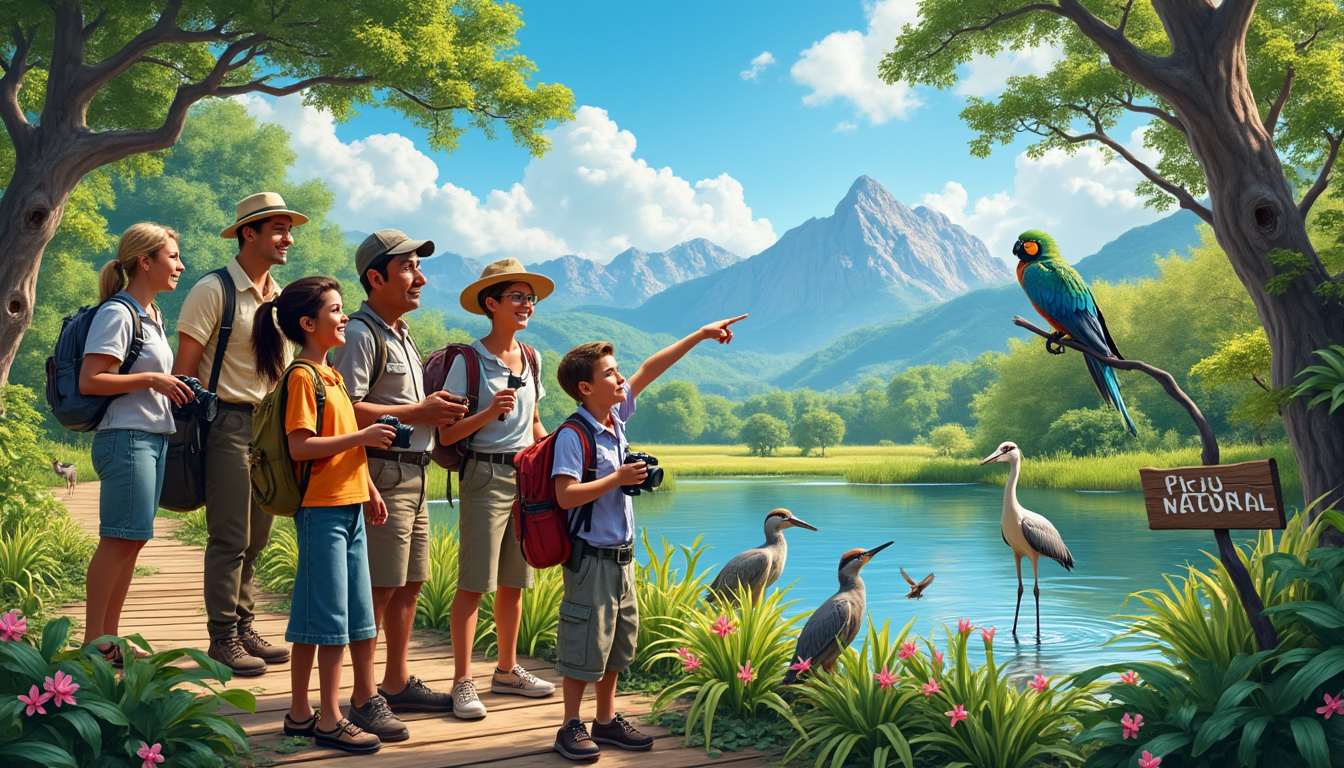Exploring the world through birdwatching offers travelers a unique blend of adventure and tranquility. With the growing interest in wildlife observation, this activity connects enthusiasts to nature’s marvels across diverse landscapes. Equipped with the right tools and knowledge, anyone can transform a simple trip into an unforgettable journey discovering feathered wonders.
Getting started with birdwatching gear essentials for travelers
Embarking on a birdwatching trip requires specific gear to maximize the experience and improve observation quality. Binoculars form the core of this equipment, allowing clear views of birds from a distance without disturbing their natural behavior. For travelers, selecting lightweight and durable binoculars from renowned brands such as Celestron, Swarovski Optik, or Vortex Optics is advantageous.
Alongside binoculars, carrying comprehensive field guides is indispensable. Trusted publications like those recommended by National Geographic and BIRDS: The Birdwatching Magazine enable quick identification of species, helping travelers familiarize themselves with local avian fauna. Additionally, compact notebooks or smartphone apps aid in recording sightings, enriching the overall learning process.
- Compact binoculars with 8×42 or 10×42 magnification
- Field guides featuring regional bird species
- Lightweight birdwatching gear bags for easy transport
- Portable spotting scopes for detailed observation
- Digital camera with zoom lens options
| Equipment | Recommended Brands | Ideal Features |
|---|---|---|
| Binoculars | Celestron, Swarovski Optik, Vortex Optics | Lightweight, waterproof, 8×42 or 10×42 magnification |
| Field Guides | National Geographic, Birdwatcher’s Digest | Regional species focus, detailed illustrations |
| Spotting Scopes | Swarovski Optik, Vortex Optics | High magnification, stable tripod compatibility |
Choosing the best locations for birdwatching: a traveler’s perspective
Knowing where to seek birds is as vital as the gear used to observe them. Travelers benefit from planning trips to areas known for rich avian biodiversity, such as renowned national parks, wetlands, and nature reserves. Destinations like the Cape Town national parks offer immersive encounters with exotic birds, as highlighted by guides available on TravelToAdventures.
Informed choices also involve timing visits during migration seasons when bird activity peaks. Collaborations with organizations like the Wildlife Conservation Society promote sustainable wildlife tourism, encouraging travelers to respect habitats while maximizing sightings.
- Research migratory patterns before traveling
- Visit protected reserves with established birding trails
- Check local conservation group updates for best spotted species
- Join guided birdwatching tours for expert-led experiences
- Use mobile apps for real-time bird sighting reports
| Location type | Advantages | Best time to visit |
|---|---|---|
| National parks | Diverse habitats, accessibility | Spring and fall migration seasons |
| Wetlands | Waterfowl abundance, unique species | Early morning or dusk |
| Urban bird sanctuaries | Easy access, year-round sightings | Year-round, especially spring |
Developing observation skills and understanding bird behavior while traveling
Observing birds effectively transcends just spotting them; it involves interpreting behaviors and habitats. Travelers can enhance their experience by learning to identify bird calls, flight patterns, and feeding habits. Recognizing these signs leads to exciting discoveries and deepens appreciation of avian life.
Patience and quiet are critical components of successful birdwatching. Staying still and blending into the environment reduces disturbance, increasing chances of approaching elusive species. Wildlife conservation ethics must be observed at all times to protect birds and their ecosystems.
- Learn common bird calls pertinent to the region
- Practice slow movements and controlled breathing
- Observe from shaded or concealed vantage points
- Keep detailed notes in field guides or digital logs
- Respect all local wildlife laws and guidelines
| Skill | Description | Benefit to traveler |
|---|---|---|
| Call identification | Recognizing bird vocalizations | Improved species detection |
| Behavioral observation | Understanding flight and feeding patterns | Enhanced engagement with wildlife |
| Camouflage techniques | Minimizing human visibility | Closer approach without disturbance |
Recording and sharing bird sightings: tools and best practices
Maintaining a detailed record of observations not only enriches personal knowledge but also contributes valuable data to conservation efforts. Travelers use field guides combined with digital platforms like eBird to log sightings and share information with a wider community.
Sharing observations through social media or dedicated birdwatching forums promotes awareness and inspires others to engage with nature responsibly. Publications such as Birdwatcher’s Digest often showcase notable traveler contributions, bridging local findings with global initiatives.
- Carry a durable journal or digital device for notes
- Upload sightings to platforms like eBird or Birdwatching Magazine websites
- Include clear photos or audio recordings where possible
- Interact with the birdwatching community online
- Support conservation projects endorsed by organizations like Wildlife Conservation Society
| Tool | Purpose | Recommended platform/brand |
|---|---|---|
| Field guide | Species identification | National Geographic, Birdwatcher’s Digest |
| Digital recording app | Data logging and sharing | eBird, BIRDS: The Birdwatching Magazine app |
| Camera | Visual documentation | Celestron optics compatible devices |
Understanding the impact of birdwatching on wildlife conservation
Birdwatching is more than a pastime; it plays a crucial role in supporting conservation efforts worldwide. Through careful observation and data collection, travelers contribute to monitoring bird populations and habitat health. Organizations such as the Wildlife Conservation Society rely on citizen scientists to enhance their research and preservation initiatives.
Responsible birdwatching practices foster positive relationships between humans and natural environments, emphasizing sustainability and respect. Publications like Birdwatcher’s Digest regularly highlight conservation success stories, encouraging travelers to become active participants in safeguarding avian diversity.
- Adhere to ethical birdwatching guidelines to avoid habitat disturbance
- Support conservation groups through donations or volunteer work
- Promote awareness about endangered species when sharing sightings
- Use eco-friendly gear made by brands committed to sustainability
- Engage in local or international conservation campaigns
| Conservation activity | Traveler’s role | Impact |
|---|---|---|
| Data collection | Recording bird counts and sightings | Informs scientific research and policy |
| Habitat protection | Following trails and respecting nesting areas | Preserves biodiversity |
| Community education | Sharing knowledge and ethical tips | Builds global awareness |
Frequently asked questions about birdwatching for travelers
- What is the best binocular magnification for beginner travelers?
For travelers starting out, binoculars with 8×42 or 10×42 magnification offer an optimal balance between field of view and clarity. - How can I find birdwatching locations while traveling?
Researching local national parks, reserves, and migratory hotspots via guides and dedicated travel websites provides excellent starting points. - Is it necessary to use a spotting scope?
While not essential, a spotting scope improves detail observation and photography, especially for distant or small species. - How to record bird sightings effectively?
Use a combination of field guides, digital apps like eBird, and photography to document and share your sightings. - Can birdwatching benefit wildlife conservation?
Absolutely; ethical birdwatchers contribute valuable data, support habitat protection, and raise awareness on conservation issues.


